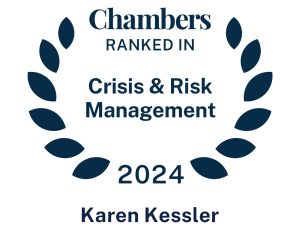“The truth shall set you free,” they say, “but first it’ll make you miserable.”
One of the most difficult challenges a consultant faces is how to tell clients the truth – especially if they’re wrong. However, while being honest may first make you miserable, it’s what’s expected and necessary.
For a consultant, particularly for a strategic communications consultant, acquiescing to a client may seem so much less stressful – and potentially more lucrative – than standing your ground. However, if your advice is to be valued, it must honestly point clients in what you believe to be the right direction.
Some clients may view any argument against doing “business as usual” as threatening. They’d rather not hear a contrary opinion or alternative strategy because it’s not “how we always did it.” A client’s tradition cannot get in the way of the consultant providing the alternative advice. And communications professionals should make it clear at the outset that they’re committed to delivering the best advice they can, even when they know the client may not want to hear it.
Giving Honest Feedback Can Be Difficult
If speaking a disagreeable truth to a client is hard, harder still is contradicting someone who has hired you for your expertise, but who insists he knows better. Clients may vaguely recognize that strategic communications consulting is a profession – and many may not truly believe in its value. We regularly hear a version of: “I know my company and how talk about it!” These are the times when you vitally need to be able to speak openly and honestly. Tough love is tough for a reason.
But how do you ensure that when the need arises, you will have established the necessary relationship to look your client in the eye and tell them what they don’t want to hear but need to know?
How to Tell Clients the Truth
1. Start Early
Make the need for an open dialogue part of your early conversations with potential clients. Explain that this will improve your ability to do your job.
2. Regular Interaction
Schedule regular meetings/calls/Zooms with clients to provide feedback and allow them to acclimate themselves with your style. If they grow accustomed to hearing truths early on, it will be less jarring when a distasteful truth comes along.
3. Ask the Client for Honesty
Provide opportunities for them to give you feedback and encourage candor. When truth becomes a two-way street, sharing a difficult truth becomes more natural.
4. Present a Solution
When sharing difficult information, also have solutions or ideas ready that can address the new challenge. They won’t kill the messenger if the messenger comes bearing gifts as well.
Truth is a Gift
All good relationships should be grounded in honesty and truth. Public relations professionals are more than just copywriters, we are strategic communications advisors. It’s not just how to say something, it’s often what to say and when, and sometimes even whether to say anything at all. We assume clients come to us for our experience, expertise, institutional knowledge, and personal connections. If instead they only expect a “yes” person, they may be better served by a good thesaurus. For that reason, we know how to tell clients the truth – and we take that task seriously.










